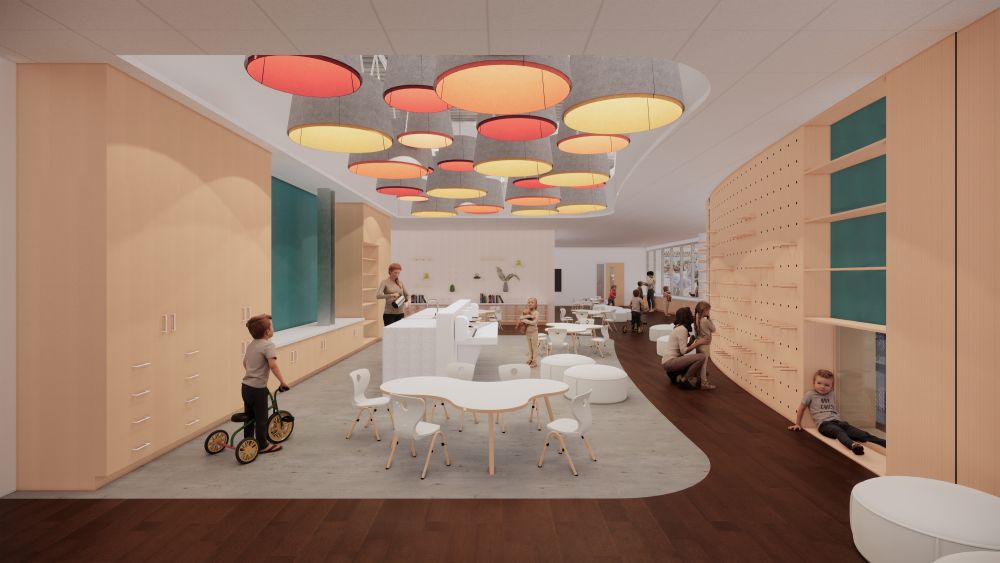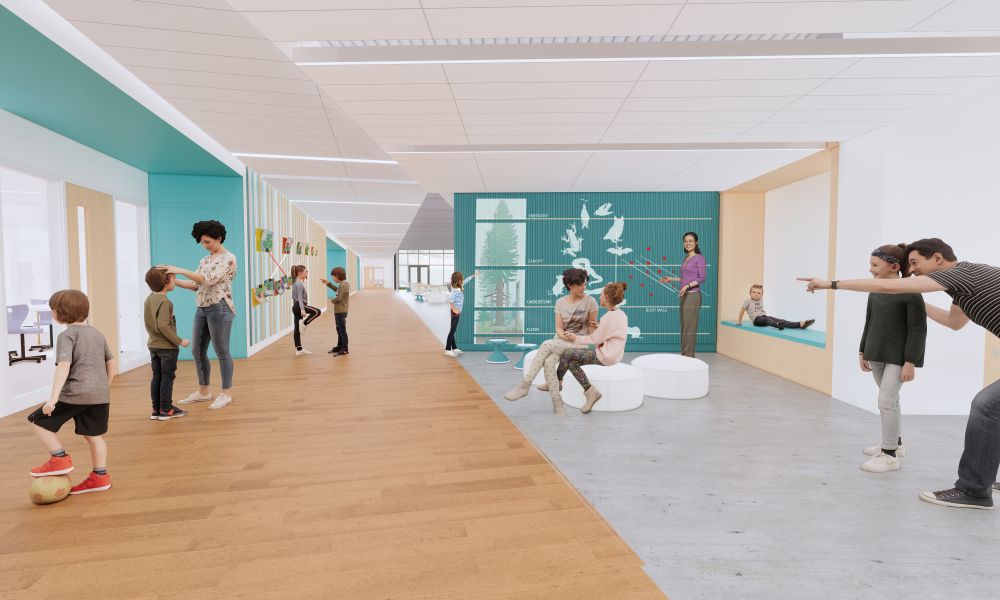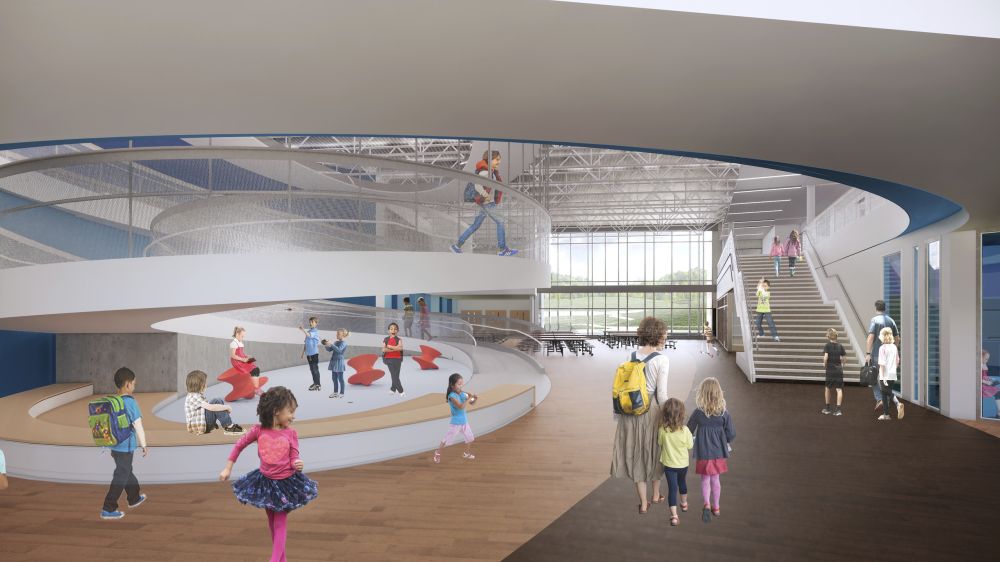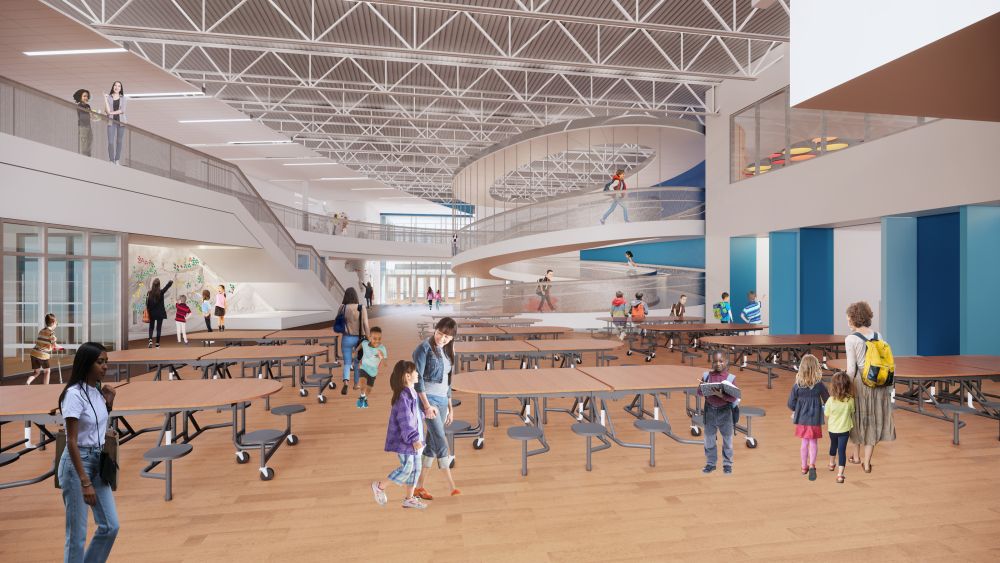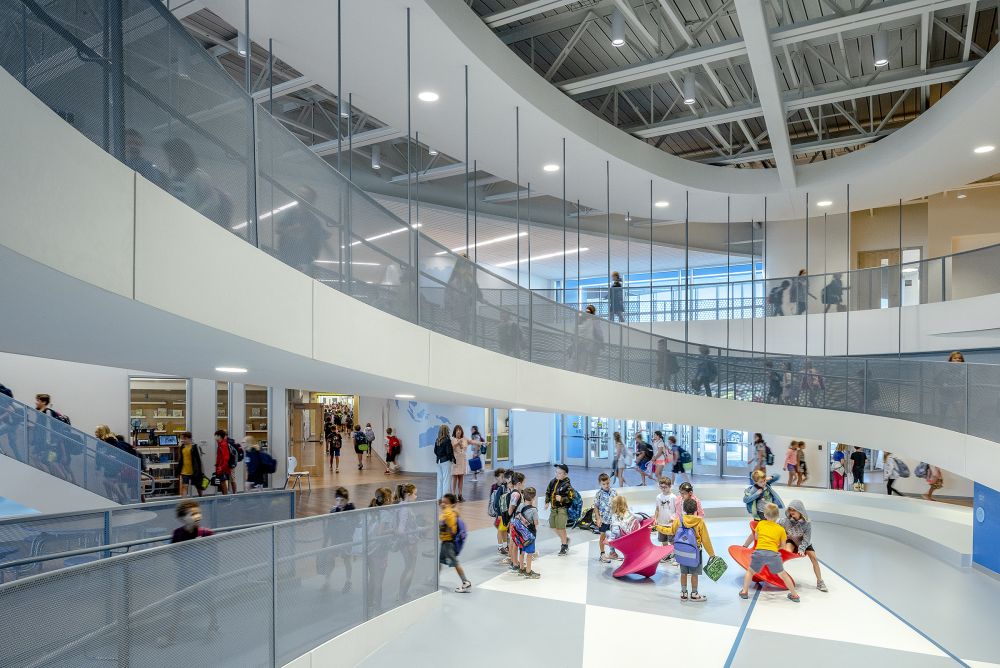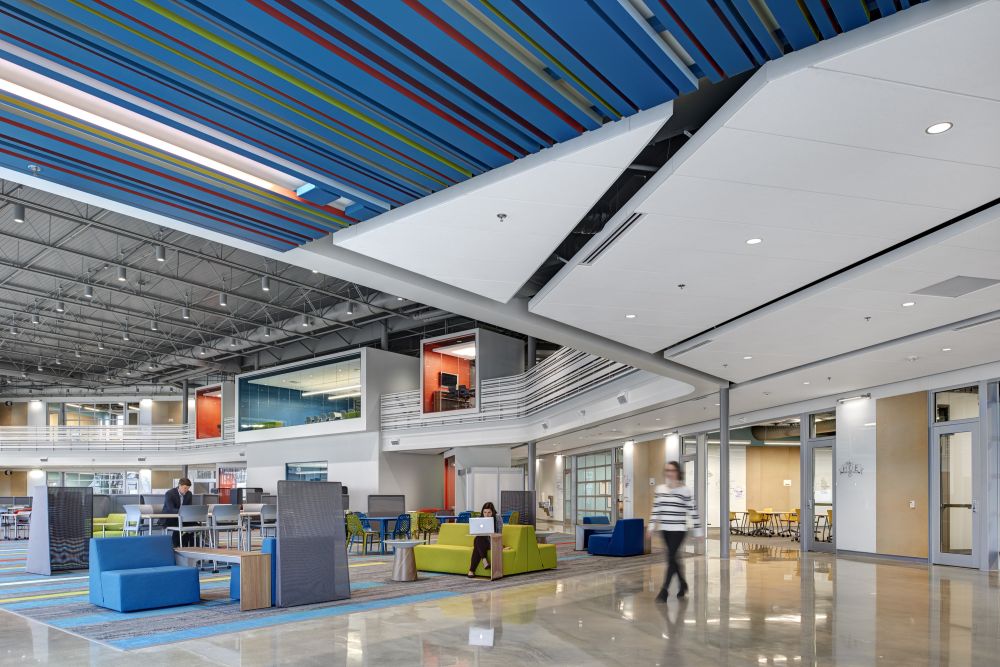The 74: Designing PK-12 schools like children's museums
October 7, 2020
Social Sharing
The 74 has published a deep look at the exciting partnership and design process driving Seneca Valley’s new Ehrman Crest Elementary and Middle School outside Pittsburgh.
Our team partnered with the Children’s Museum of Pittsburgh on the design to create learning environments that were more compelling, engaging and successful for students.
As The 74 piece indicates, “the ensuing design, then, is decidedly different from a traditional school build, bringing together the resourcefulness of a museum with the desire to use every possible opportunity to teach and the ability to curate learning in an ever-shifting landscape.”
Testimonials
Here's a few excerpts from the article:
On using corridors as learning tools
School corridors aren’t often leveraged as teaching tools, but to be more like a museum that uses every possible area as a resource, the Seneca Valley project will have graphics-filled walls throughout. The K-2 corridor will focus on shapes, counting, base 10, maps and animals. The grade 3-4 corridor will highlight electricity, earth sciences, measurement, maps, graphs and reading, and the 5-6 corridor will focus on 3D plotting, soils and hydrology, ecosystems, fractions, algebra and language.
On allowing students and teachers to curate their space
Instead of stairs through most of the site, there are ramps both on the exterior and in the lobby. Many of the classrooms have direct access to outside; those pathways, and ample use of daylight, aim to connect the interior and exterior environments. The scale of the building adapts to make what’s big feel small. For example, the littlest students—kindergartners—will have a loft on the second floor with a dedicated roof terrace, in a small, specially closed-off area just for them.
Areas that aren’t serving as teaching tools are intentionally left neutral to allow student work to stand out, and, as in a museum, spaces have layered functions, such as a small-group instructional area that also serves as a sensory room.
“We needed to think about how we change the culture so students and teachers feel like they have agency over the space to make changes in real time without spending more money to make the space the way they needed in the moment,” said Anne Fullenkamp, the director of design with the Children's Museum of Pittsburgh.
